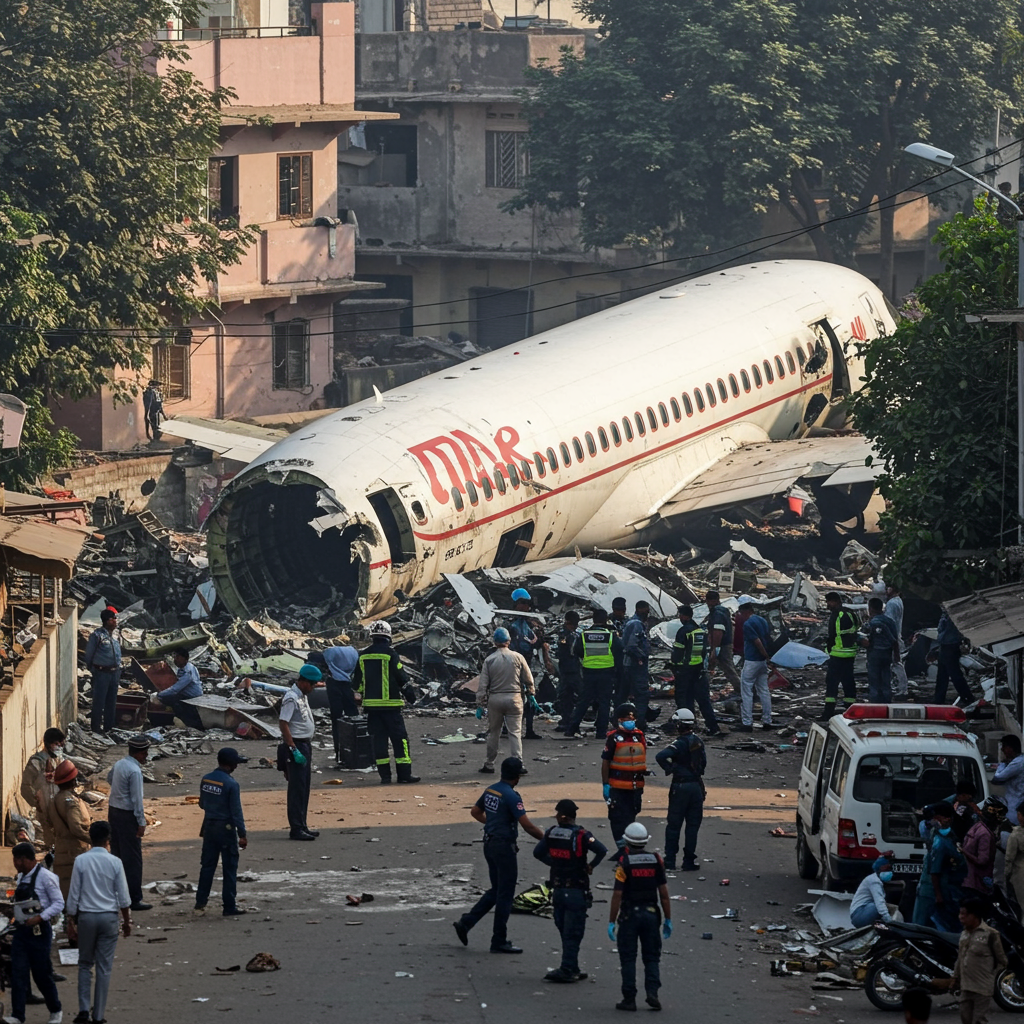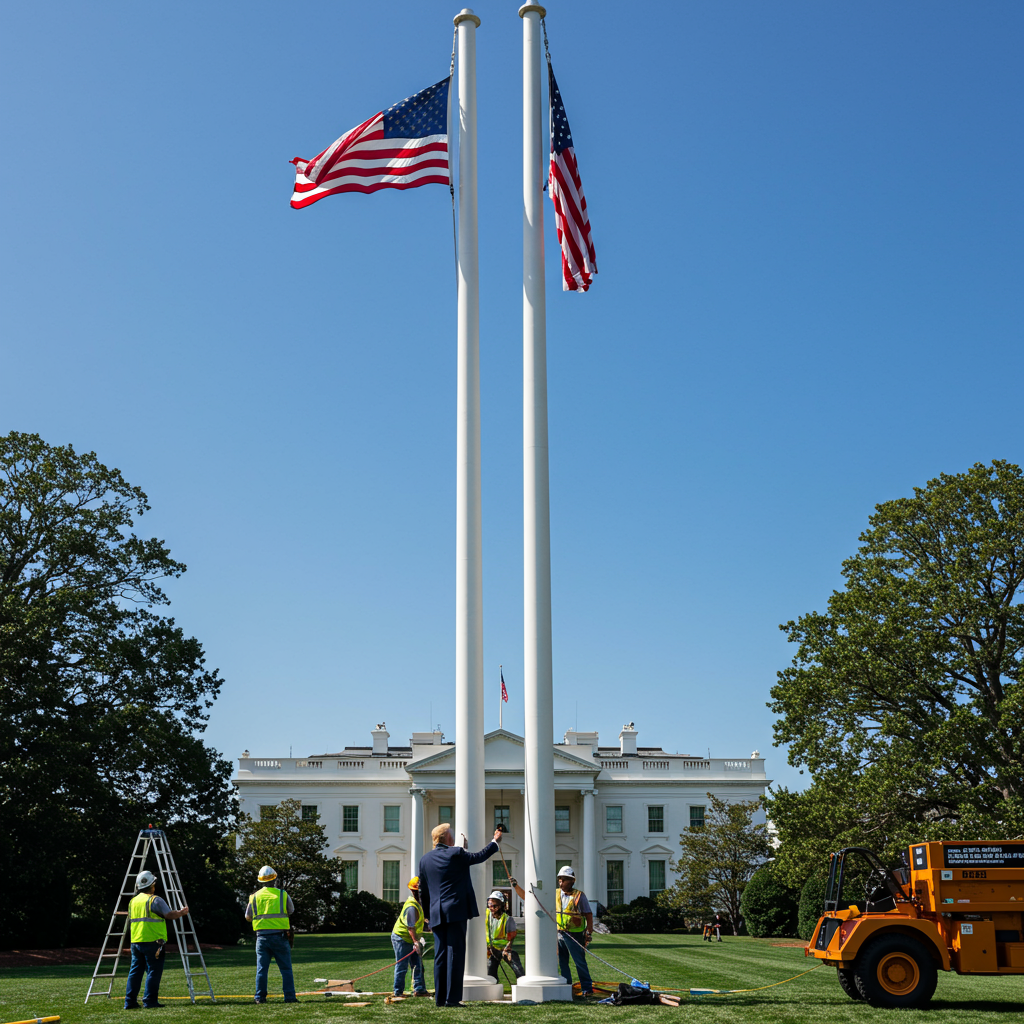Less than 40 seconds. That’s the brief, terrifying duration Air India Flight 171 remained airborne before its catastrophic plunge into a densely populated neighborhood in Ahmedabad. The crash of the Boeing 787 Dreamliner shortly after takeoff stands as one of India’s rarest and most devastating aviation disasters in recent memory.
The London Gatwick-bound flight, carrying 242 people and nearly 100 tonnes of fuel, lifted off from Ahmedabad at 1:38 pm local time on Thursday. Aboard were 12 crew members and 230 passengers, including 53 British citizens and families with children. The flight was helmed by Captain Sumeet Sabharwal. Tragically, just 10 seconds after leaving the ground, available flight data indicates the Dreamliner stalled its upward movement, reaching a mere 160 meters before beginning a steady descent with its nose tilted. A mayday call crackled from the cockpit – the final transmission – before the aircraft impacted ground less than a minute after liftoff, engulfed in flames.
The Unfolding Disaster and Its Immediate Aftermath
The impact point was particularly tragic: accommodation facilities for doctors and medical students at the nearby Ahmedabad civil hospital complex, only about a kilometer from the airport. CCTV footage and witness accounts paint a grim picture. As the heavy aircraft and its full fuel tanks exploded, a massive blast sent thick black smoke towering into the sky, visible across the city.
Witnesses at the hospital, like Dr. Keyur Prajapathi and Dr. Krishna, described immediate chaos, dust, debris, and the tail fin lodged in a building. Parts of the plane, including the nose and front wheel, landed on the hospital canteen, where up to 200 students and staff were having lunch. While rescuers aided around 15 students from the canteen area, fears of mass casualties on the ground were realized; reports indicated the recovery of at least 30 bodies from a single building. The death toll from the crash reached at least 270, including nearly all 242 on board.
Amidst the devastation, one extraordinary story emerged: Vishwash Kumar Ramesh, a British passenger seated in seat 11A, somehow survived with only cuts and bruises, managing to walk away from the wreckage. His account, describing a loud noise followed by the rapid crash and finding bodies around him, highlights the terrifying speed of the event.
The crash also captured by chance. 17-year-old Aryan Asari, a plane spotting enthusiast, filmed the takeoff from a nearby terrace. His video, showing the plane “shaking, moving left and right” and going “down and down,” became crucial evidence and went viral, although it has had a deeply traumatizing effect on the young witness.
Launching a Complex Investigation
Described by aviation experts as a “rarest of the rare” event – a controlled flight into terrain occurring just seconds after takeoff, unprecedented in the experience of former Indian AAIB investigator Captain Kishore Chinta – this disaster demands an exceptionally thorough inquiry. Investigators now face the grim task of determining precisely what went wrong in those critical seconds.
Under international rules set by the UN aviation body ICAO, a preliminary report is expected within 30 days, with a final report ideally completed within 12 months. India’s Aircraft Accident Investigation Bureau (AAIB) is leading the probe, supported by experts from Boeing (the aircraft manufacturer), engine-maker GE, Air India, and Indian regulators. Given the aircraft’s origin, teams from the US National Transportation Safety Board (NTSB), the US Federal Aviation Administration (FAA), and the UK are also participating under international protocols. The Indian government has also established a high-level committee to examine the causes and propose new standard operating procedures (SOPs).
Decoding the Black Boxes and Physical Evidence
Crucial to the investigation are the aircraft’s Enhanced Airborne Flight Recorders (EAFRs) – commonly known as the “black boxes” (though they are bright orange). Both the cockpit voice recorder (CVR), capturing all cockpit audio from conversations to ambient sounds, and the flight data recorder (FDR), logging hundreds or thousands of parameters every second (including speed, altitude, engine performance, flap positions, fuel flow, and control movements), have been recovered. Modern FDRs capture vastly more data than older models, transforming crash investigations.
Investigators employ a process of triangulation and elimination, matching physical evidence from the crash site with recorded performance data. The wreckage itself holds vital clues. Examining the two engines is a top priority; experts can tell from turbine damage patterns whether the engines were generating power at impact. According to Peter Goelz, a former NTSB managing director, if the engines weren’t producing power, the focus shifts sharply to the cockpit. If they were, attention moves to aerodynamic surfaces like flaps and slats (critical for lift at low speeds). If those were correctly positioned, the inquiry becomes more complex, potentially pointing to the highly automated flight management control system (FMCS). A problem with the FMCS, which integrates numerous sensors to optimize flight, would raise serious concerns for the global Boeing 787 fleet of over 1,100 aircraft.
Beyond engines, investigators will meticulously collect and analyze every piece of wreckage, from scorched cables to nuts and bolts. The fuel system (filters, lines, residual fuel) will be checked for contamination, a factor typically easy to confirm or rule out.
Comprehensive Record Review and Pilot Evaluation
The investigation extends far beyond the crash site and black boxes. Investigators will delve into extensive documentation:
Aircraft Records: Maintenance logs, fault history from Air India and Boeing’s ACARS system (which transmits data via radio/satellite), service history of replaced components, and reported defects.
Operational History: Reviewing the aircraft’s and crew’s performance on previous flights.
Pilot Evaluation: Examining licenses, training records, simulator performance (especially handling emergencies like engine failures), and instructor remarks.
While India’s civil aviation ministry recently stated that inspections of Air India’s 787 fleet (24 of 33 checked) revealed “no major safety concern,” and Boeing has deferred to the Indian AAIB as per protocol, investigators will explore all possibilities. Potential causes being probed include engine failure (due to bird strike, fuel contamination, or maintenance error), improperly extended flaps reducing lift, an inadvertent crew action cutting off fuel, or a system malfunction, particularly involving the FMCS.
The Agonizing Wait for Answers
For the families of those lost, the investigation proceeds alongside an agonizing wait for identification and answers. The severe nature of the crash has made DNA matching necessary, a slow and painstaking process that has left many families, like that of British citizen Faizan Rafik, in desperate limbo, struggling to get information and support.
Experts agree that while investigators can often quickly determine what happened in a crash, understanding the complex interplay of factors that reveal why* it happened can take significantly longer. With immense pressure to uncover the truth behind this tragedy, the detailed, multi-faceted investigation into Air India Flight 171 continues.




